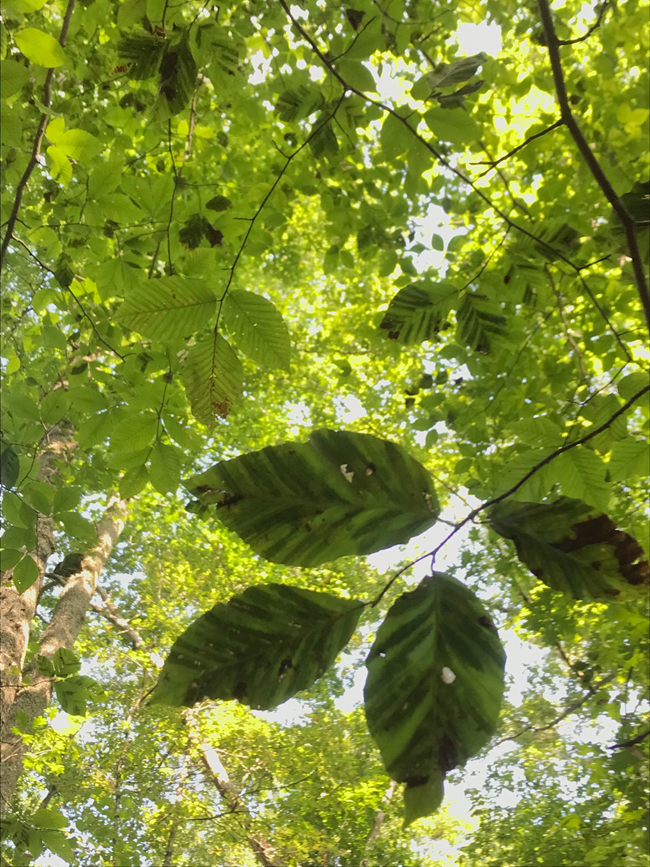A Quick Look
Tree species that are facing harm from forest pests include ash, beech, American chestnut, and eastern hemlock trees.

NPS/Brolis
Importance and Issues
Targeted insect pests and pathogens are a part of forest vegetation monitoring in National Capital Region (NCR) parks. Forests are the dominant landcover in our parks, and insect pests are a major threat to forest health and regeneration.
Beech leaf disease is the latest serious pest to affect NCR forests. It was first confirmed at Prince William Forest Park in 2021. It joins the company of emerald ash borer, which has killed more than two-thirds of all ash trees in NCR parks since it appeared in the region in the mid-2000s. Spongy moth (Lymantria dispar) is a common pest in park forests, especially at Catoctin Mountain Park and Harpers Ferry National Historical Park. We also encounter dogwood anthracnose, chestnut blight, and hemlock woolly adelgid.
Forest pest monitoring is a part of forest vegetation monitoring in the National Capital Region Network (NCRN). Jump to how we monitor forest pests.
Monitoring Questions and Approach
- What forest pests and diseases are present and where?
Detailed monitoring objectives from our protocol document are found here.
Source: NPS DataStore Saved Search 1276. To search for additional information, visit the NPS DataStore.
Source: NPS DataStore Saved Search 1303. To search for additional information, visit the NPS DataStore.
How We Monitor
Targeted insect pests and pathogens are a part of forest vegetation monitoring which began in the National Capital Region Network in 2006. More than 400 sites are spread across all NCRN parks. Field crews sample more than 100 forest plots each year from approximately May through September. The cycle repeats every four years.
At each plot, field crews take the following measures:
- Record any presence of targeted invasive plants and targeted insect pests and pathogens
- Identify species of trees, shrubs, vines, and specific herbaceous plants
- Tag and record individual trees and shrubs
- Assess trees for canopy class and diameter
- Note any evidence of deer browse on trees or shrubs
- Count seedlings and record cover of herbaceous plants in 12 small quadrats
- Measure coarse woody debris along three transects
Last updated: October 24, 2022
